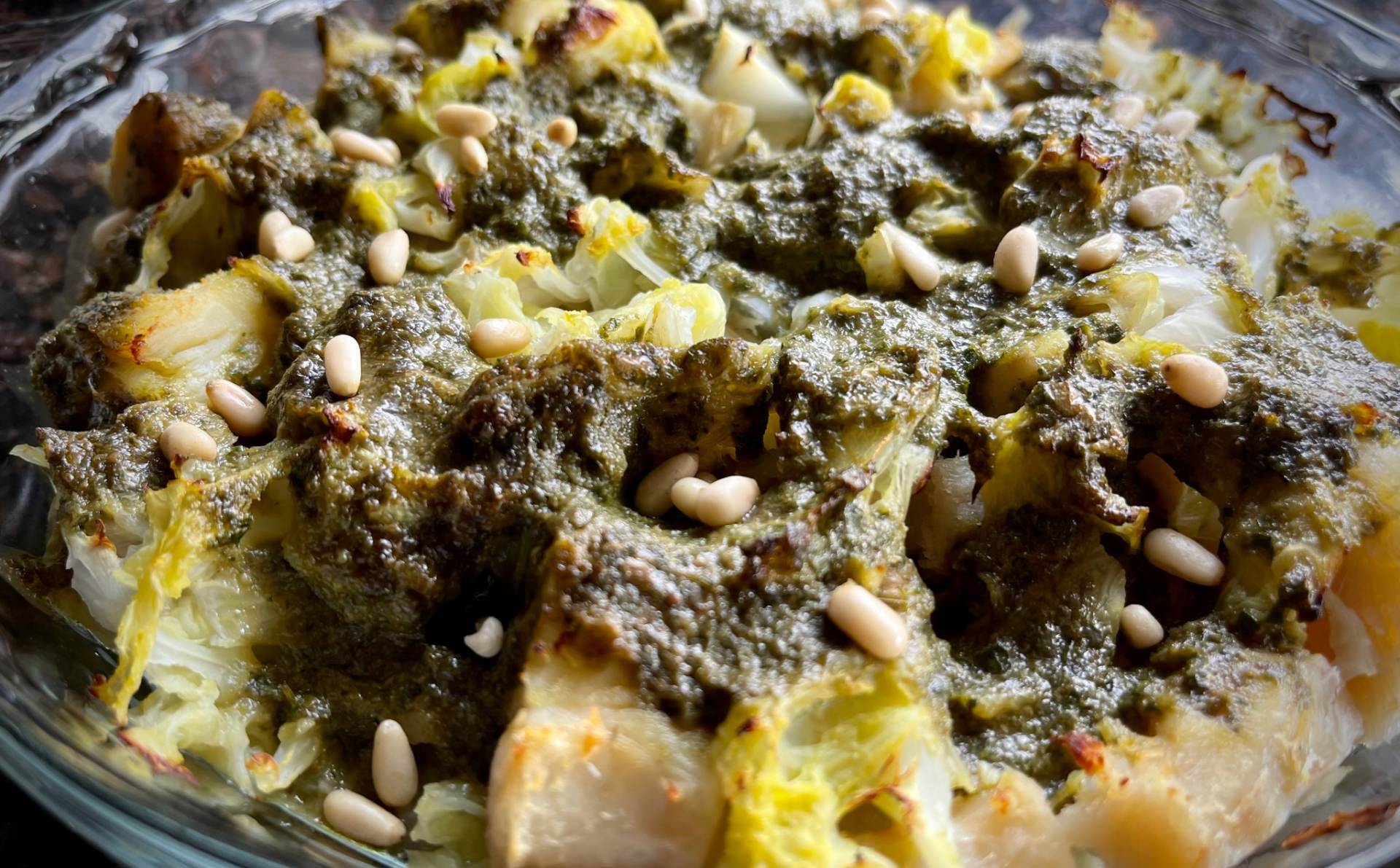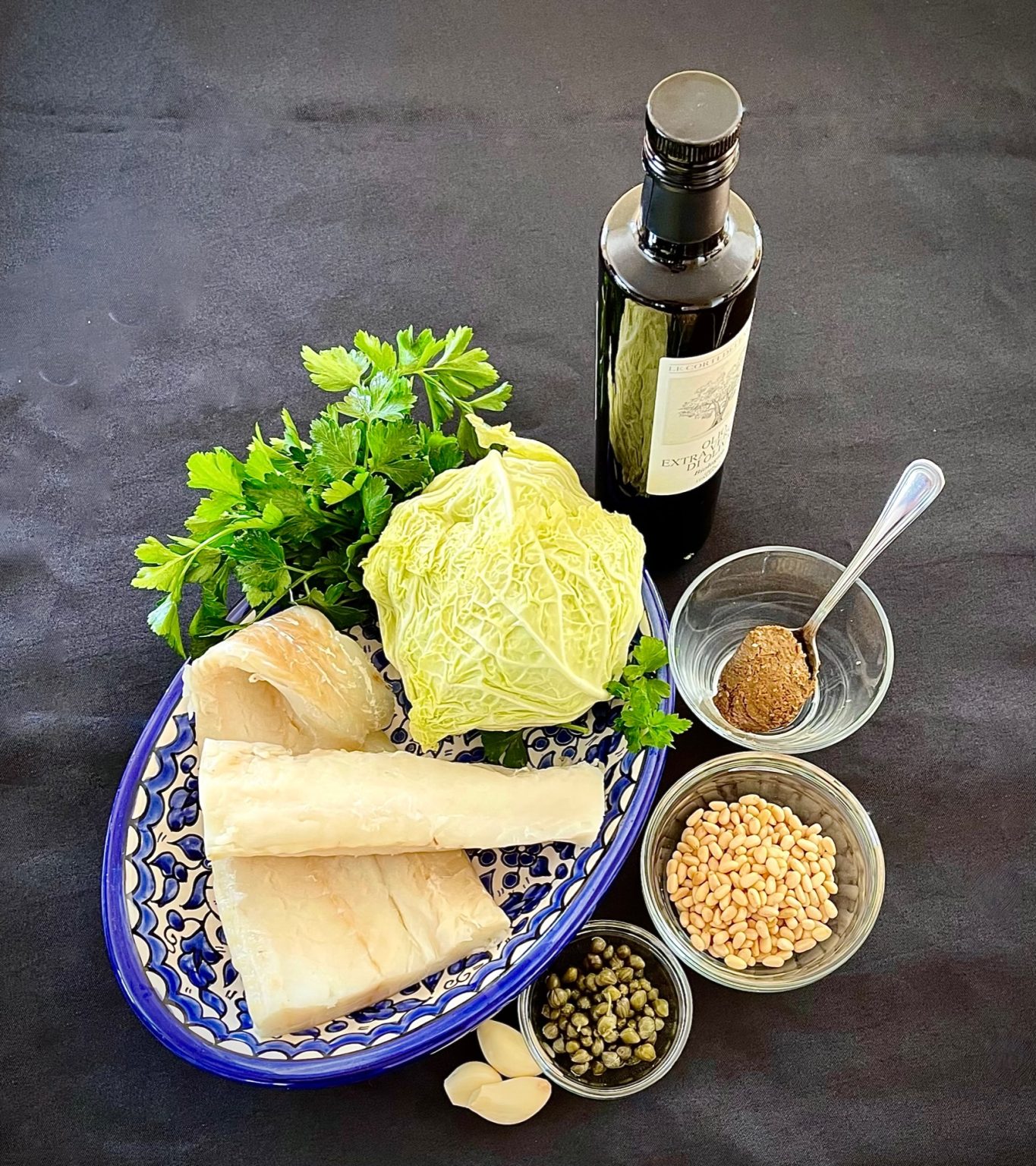Baccalà (Cod Fish) with Green Sauce

Baccalà is extremely popular in many regions of Italy, with a myriad of recipes and regional adaptations. It is one of those old-fashioned ingredients that never fails to please – at least those who like it: usually around each table there are half of the guests who love it and half who hate it, probably because of its peculiar taste. So, I hope you will be part of the first half!
The concept of consuming dry fish rehydrated was introduced in Italy around the 15th century by the seafarers from Venice, Genoa and other Mediterranean cities, who discovered how far away in Northern Europe sailors would fish cod, filet it and put it to dry hanging in the air. The fish would become as hard as a wooden stick (literally the meaning of the Dutch name “stokvis” translated in Italian as stoccafisso, a close relative of Baccalà) and would stay good for months, no refrigeration required. In most regions of Italy, the conservation method also uses sea salt and a long resting period, until the fish is almost completely dry. Very useful to have it always handy! But actually, you have to plan ahead to eat it, as it requires 36 to 48 hours rest time in fresh water to rehydrate and get soft again before you can start cooking it. You would find the Baccalà already soaked at the market especially on Fridays, traditional fish menu day, swimming (so to say) in a big tub of fresh water, with a continuous flow of clean, cold water.
Here in Los Angeles, where I live, I find Canadian Baccalà filets that are very good, meaty, and boneless. If you buy the version with the skin and the bones that I have seen in some seafood shops, it might get very complicated to clean and you would end up wasting a lot of it.
Cod is very rich in lean protein, several minerals and B vitamin. On the other hand, it is low on healthy Omega 3 fatty acids compared to other fish. But it is also low on Mercury content, so it is all in all a good addition to your diet (www.Healthline.com).
To avoid having a high content of sodium in the prepared dish, you have to rinse the salted dry cod filets and then put them in a large bowl of ice-cold water in the refrigerator for 48 hours or more. You need to change the water at least every 12 hours. It is impossible to establish a fixed amount of soaking time as the degree of saltiness can vary, and it also depends on the thickness of the filet. To decide whether the fish is ready for cooking I check its softness and taste the water: if it looks like fresh fish and the water tastes like sea water it is usually ready. If you cut the filet in portions the process will be somewhat faster. If you leave the fish longer than needed in water, it will become too bland.
The recipe I made today is popular in Liguria and a friend of mine explained it to me years ago.
It is very simple, very savory, quite quick to realize and inexpensive. It is a one-dish-dinner, and you can add some roasted potatoes on the side to make it more filling.


PREMIUM CONTENT for MEMBERS ONLY
Ingredients
For 4 Servings
1 cup Carnaroli rice
1 medium onion, chopped
2-3 tablespoons of EV Olive Oil
½ glass of white table wine
1 pint chicken stock preprepared (or vegetable stock)
1 cup rinsed blueberries
1 cup roasted chestnuts or more, chopped in big pieces
2 tablespoons butter
2 tablespoons gorgonzola cheese (optional)